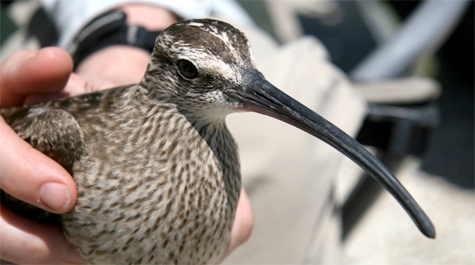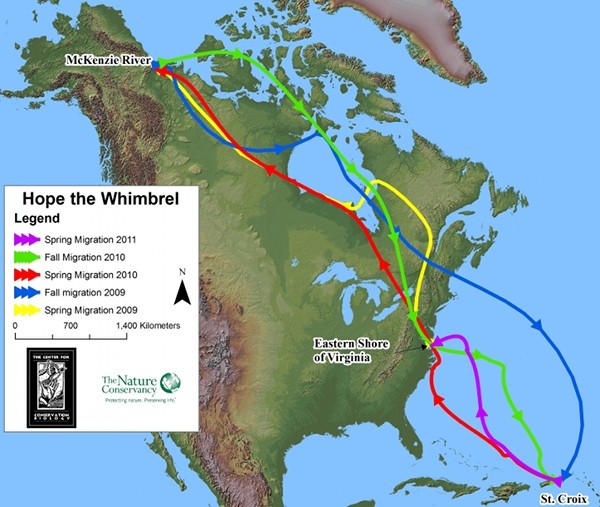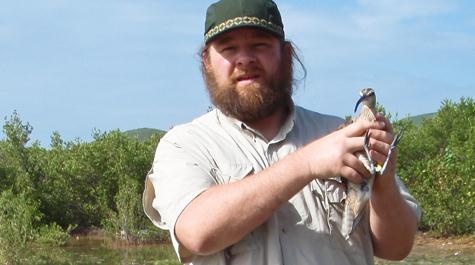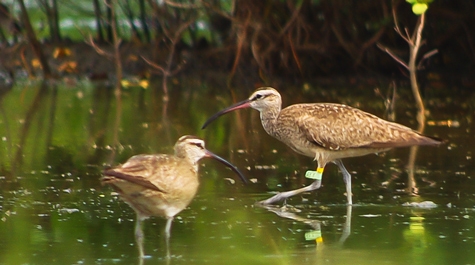
The U.S. Virgin Islands are so beautiful it’s no wonder people come here every winter, year after year. Some birds do too, and they show incredible site fidelity even in their choice of rest stops along the way.
Whimbrels are large shorebirds with long decurved bills who breed on the marshy tundra of Alaska, Northwest Canada and Hudson Bay.(*) Their breeding season is short so they make 14,000 mile annual migrations to spend most of the year in Brazil or the Caribbean. On migration they often use the same favored stopovers on the U.S. coast. That’s how one particular whimbrel nicknamed Hope encountered biologists from William & Mary’s Center for Conservation Biology (CCB) in May 2009.
Since 2007 CCB had been tracking shorebird migration by fitting whimbrels with satellite backpacks at their staging areas on the Delmarva peninsula. The satellite data, mapped by CCB and The Nature Conservancy, provided astonishing results. For instance, from 2009 to 2011 Hope traveled faithfully from the Mackenzie River Delta to Great Pond at St.Croix, nearly always stopping at Delmarva along the way.

Her amazing migration made news at Audubon Magazine and EarthSky.org, and became a conservation story in the U.S. Virgin Islands.
In 2012 shortly after returning to St. Croix, Hope’s satellite antenna broke, rendering the tracking unit useless. Rather than replace the unit, CCB decided to remove it and put colorful tags on her legs so that local birders could recognize her. Here, Fletcher Smith holds her one last time before releasing her at Great Pond.

Hope retired from the tracking program but she didn’t stop her normal life. True to her habits, she still makes her faithful journey. In August 2013 she was photographed at St. Croix having completed her first round trip to Canada without the backpack. Here she is sporting her yellow and green leg tags at Great Pond. She’s there this winter, too.

We humans may visit the same places every year but for truly incredible site fidelity follow a whimbrel.
Read more about CCB’s Center for Conservation Biology shorebird tracking program and watch cool videos of the Mackenzie Delta and a whimbrel with chick here at the Center for Conservation Biology.
(photos and map courtesy of the Center for Conservation Biology)
And … two more messages:
1. Though I visited St. John, U.S. Virgin Islands I did not go to St. Croix to see “Hope.” St. Croix is 43 miles south of St. John and there is no longer any ferry service. Like a whimbrel, you have to fly.
2. (*) These breeding and migration ranges refer to the Atlantic-migration whimbrels of North America. Whimbrels have a worldwide distribution.